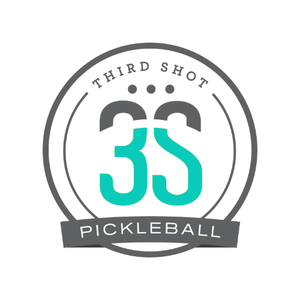One of the great things about pickleball is how easy it is to start playing. Even without a strong racquet sport background, new players can have fun almost immediately after hitting the court.
This low barrier to entry also means that we see pretty wide variations of technique (i.e. how people use their body and paddle). Drop in on your local courts and you'll see a plethora of different grips people use to hold their paddle. You'll see some people prepare for the ball in a sideways position and others who are almost always facing forward. You'll notice some players using two hands on their backhands and others who only use one.
And the thing is, even with these different approaches to technique, players can be seen to be having fun and success on the court. So this naturally leads to the question: what counts as 'good' technique?
From my perspective, there are three things we need to look at...
Is it safe? The first litmus test for whether or not technique is ‘good’ is whether players can use it with little or no risk of injury because of the technique. Whether we are talking about how a player holds their paddle, how they move around the court, or how they use (or don’t use) certain parts of their body when hitting the ball, we should try to figure out whether the technique is adding risk of injury.
When people hit backhand groundstrokes (e.g. a return of serve or third shot drive) but rely primarily on their arm to swing the paddle rather than their body, they are asking relatively small joints (shoulder; elbow; wrist) to do a lot of explosive work. This puts them at greater risk of injury than if they were also using of their hips and core and using some body rotation to send the ball. So we would say this is not great technique because it puts these smaller joints at undue risk of injury.
Is it effective? The second question we should ask ourselves is whether a particular technique is good at getting the job done. Whether we are talking about hitting hard, controlling direction or adding certain kinds and amounts of spin, does the technique we are using allow us to accomplish the goal?
For example, when people use an eastern forehand grip when hitting backhands, the grip is incredibly weak — it also tilts the paddle so balls are more likely to go high. This is not an ideal grip for hitting solid backhand groundstrokes and volleys (and is why so many recreational players struggle with backhands). So it is fair to say that using this grip on the backhand side is poor technique for most people.
Can you build on it? Finally, when considering a player’s technique we should think about not just what is happening now, but what might happen (or not) in the future. Is this technique a good foundation for the kinds of shots the player will need to play down the road? Sure, back-peddling for a lob may be able to get you to the poor lobs that your 2.5 opponents give you, but what happens when the lobs get deeper and are better disguised? Will this technique stand up to that? Will your weird grip serve you well when stronger opponents start speeding things up or making you move and stretch, or will it breakdown? Will you be able to hit harder, more precisely and with more spin using your current technique, or will it limit you?
Thinking about the needs of the future should also be part of the conversation when debating technique. And this is where a knowledgable coach can be a big help. The player may not have a sense of what will be needed later on, and a good instructor can help them see the future a little bit.
Instructor Certification
High Quality. Affordable. On your schedule.
I have always encouraged people to regard technique not as an end in itself, but as a tool to implement certain tactics. Pickleball isn’t synchronized swimming or gymnastics - you don’t win points because your technique is good. You win because you put the ball in play once more than the opponent does.
The technique a player uses will make it more or less likely that they can do what they want with the ball; that they can control its height, spin, speed, distance and direction. And while solid technique will make it more likely they can do this, poor technique can become the limiting factor. That’s why it is so important for us as players to think about how we use our body, and for those of us who coach to pay equally close attention.
Mark Renneson is a professional pickleball coach and is the founder of Pickleball Coaching International which delivers PB coach education and instructor certification. Learn more at pcipickleball.com



